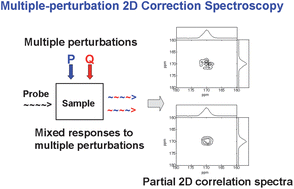Parallel factor (PARAFAC) kernel analysis of temperature- and composition-dependent NMR spectra of poly(lactic acid) nanocomposites
Abstract
The parallel factor (PARAFAC) kernel

* Corresponding authors
a
Research Institute of Instrumentation Frontier, Advanced Industrial Science and Technology (AIST), Japan
E-mail:
h-shinzawa@aist.go.jp
Fax: +81-52-736-7224
Tel: +81-52-736-7563
b Mikawa Textile Research Center, Aichi Center for Industry and Science Technology, Otsuka-cho, Gamagori, Japan
c Department of Chemical Engineering, Graduate School of Engineering, Nagoya University, Furo-cho, Chikusa-ku, Nagoya, Japan
d The Procter & Gamble Company, 8611 Beckett Road, West Chester, OH, USA
The parallel factor (PARAFAC) kernel

 Please wait while we load your content...
Something went wrong. Try again?
Please wait while we load your content...
Something went wrong. Try again?
H. Shinzawa, M. Nishida, W. Kanematsu, T. Tanaka, K. Suzuki and I. Noda, Analyst, 2012, 137, 1913 DOI: 10.1039/C2AN16019F
To request permission to reproduce material from this article, please go to the Copyright Clearance Center request page.
If you are an author contributing to an RSC publication, you do not need to request permission provided correct acknowledgement is given.
If you are the author of this article, you do not need to request permission to reproduce figures and diagrams provided correct acknowledgement is given. If you want to reproduce the whole article in a third-party publication (excluding your thesis/dissertation for which permission is not required) please go to the Copyright Clearance Center request page.
Read more about how to correctly acknowledge RSC content.
 Fetching data from CrossRef.
Fetching data from CrossRef.
This may take some time to load.
Loading related content
